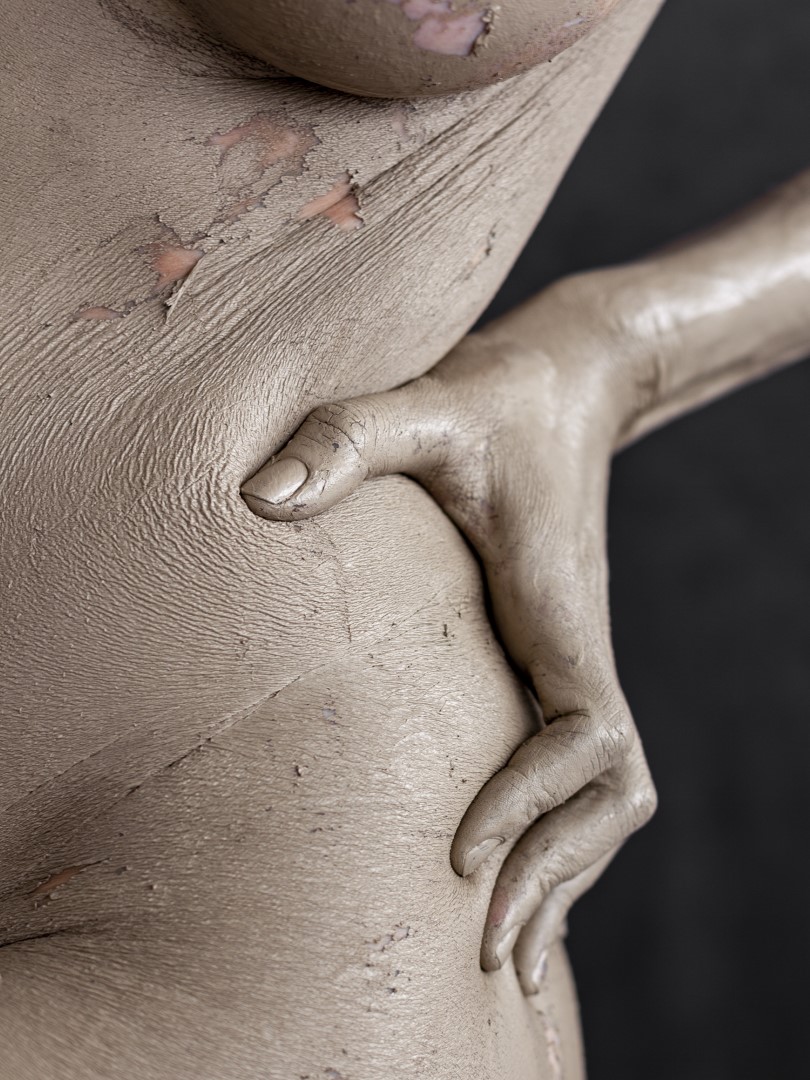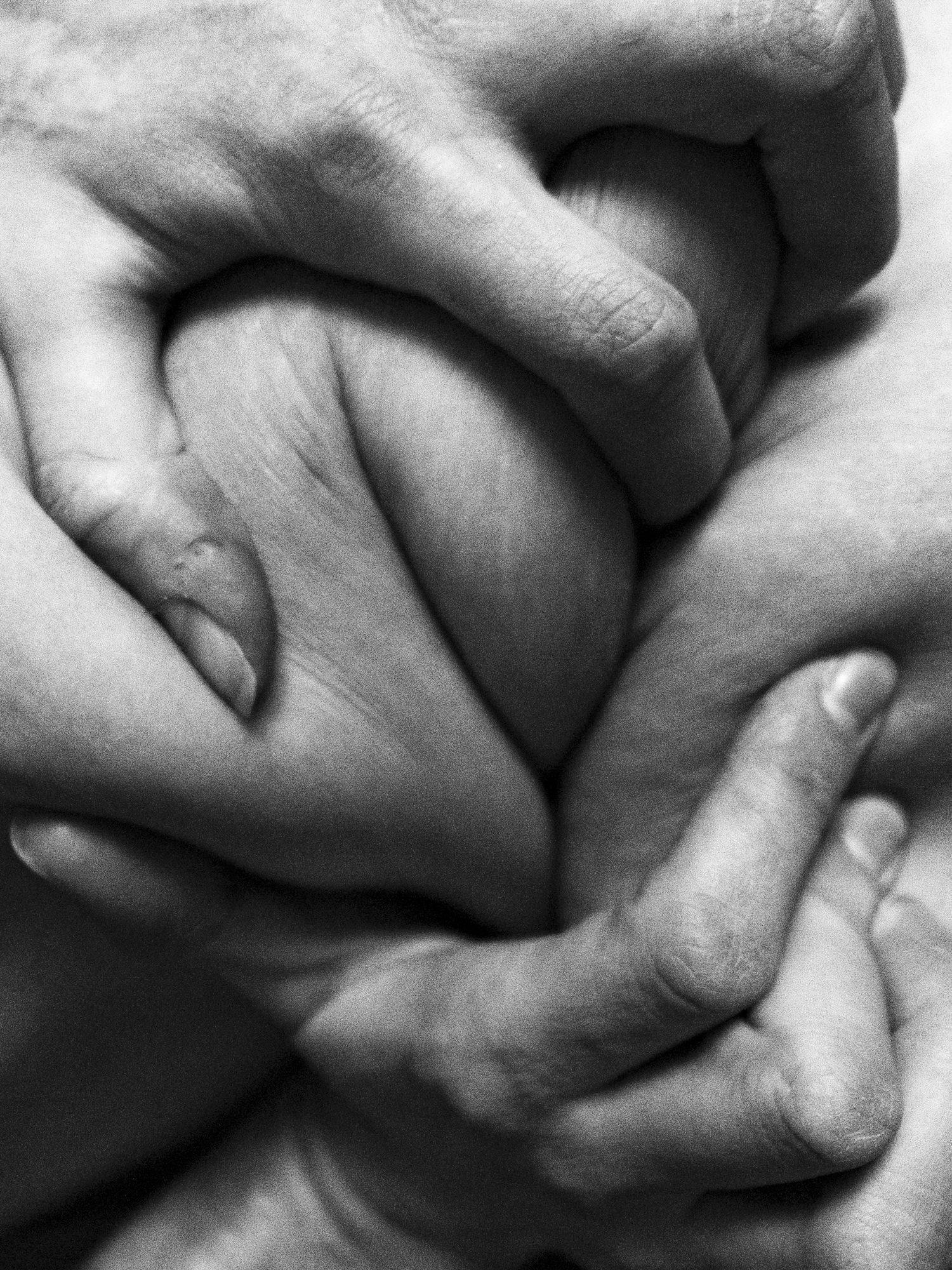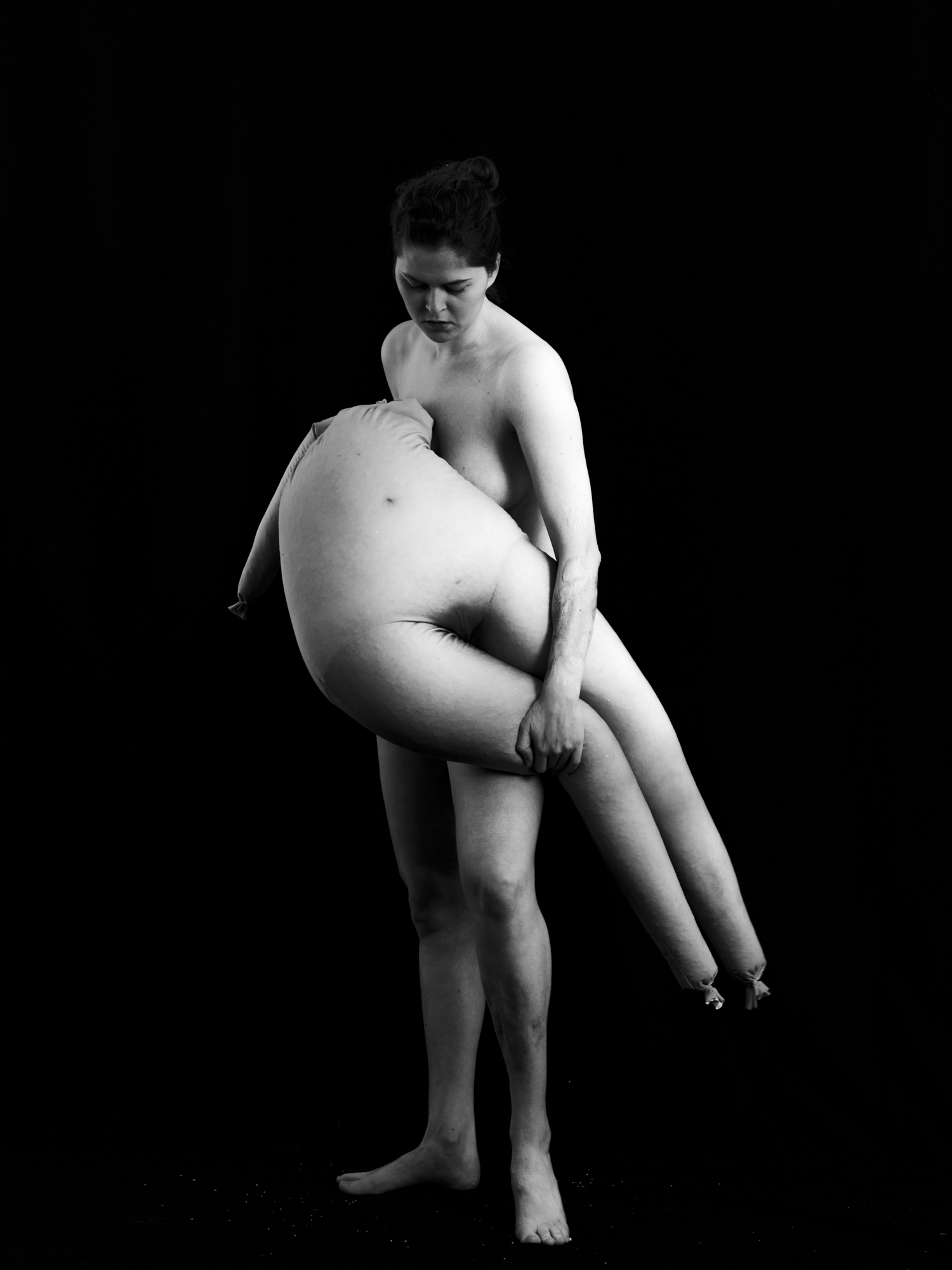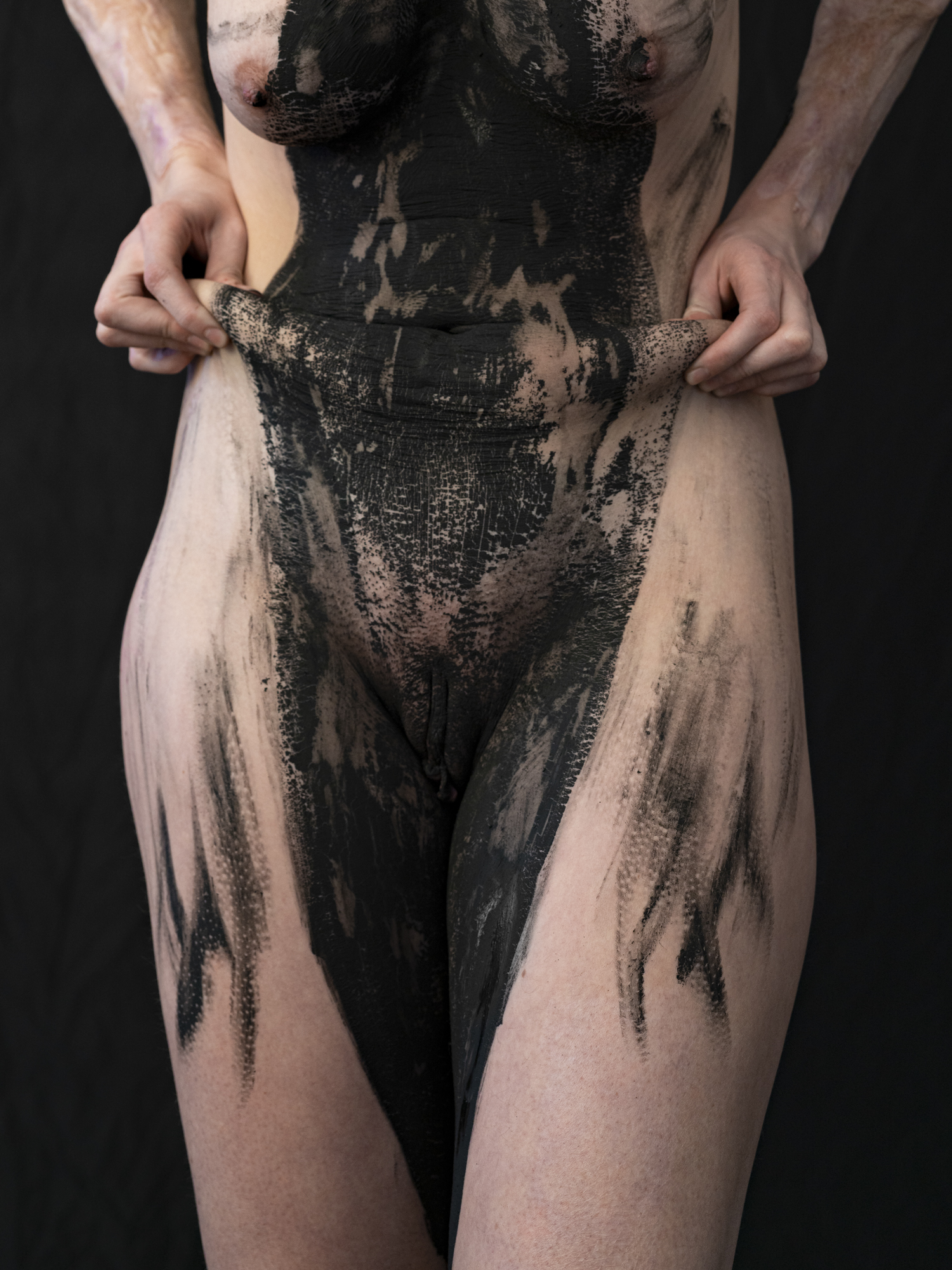Hospes made her breakthrough in 2016, aged only twenty-two, with her photo book UCP about her stay at the University Centre for Psychiatry in Groningen, where she was treated following a suicide attempt. Here, unable to talk about the situation she found herself in, she began to photograph herself in an attempt to express her emotions. The resulting series is a confrontational document of depression and self-harm. It was also the genesis of Hospes’s subsequent work. The limitations of being locked away, alone, for long periods forced her to find inventive ways to visualise her ideas. After all, she was her only available model.
Hospes continued her experiments while studying for her master’s degree at the St. Joost School of Art and Design. Her attempts to understand her psychology led her to the French psychoanalyst Didier Anzieu (1923-1999), who used the skin as a metaphor in his theories about the human psyche. Inspired by this metaphor, Hospes sees our skin as the outer layer of our mental state and as a means of representing our interior world. By openly showing her body, Hospes breaks with taboos surrounding mental health and with our unrealistic beauty ideals.
Fotomuseum Den Haag Stadhouderslaan 43 | Postbus 72 | 2517 HV Den Haag




